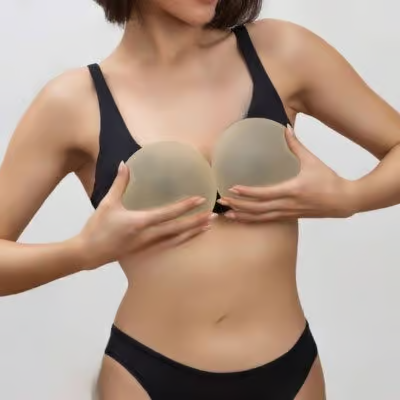BREAST LIFT
Common Myths About Breast Implants in Dubai

Breast augmentation is a popular cosmetic procedure that has helped countless women achieve their desired appearance and boost their self-confidence. However, there are several myths and misconceptions surrounding breast implants that can create confusion and uncertainty among those considering the procedure. In this blog, we will debunk some of the most common myths about breast implants and provide you with accurate information to make an informed decision.
Myth 1: Breast Implants Always Look Unnatural :
One of the most prevalent myths about breast implants is that they always result in an unnatural appearance. While it is true that poorly executed procedures or extreme implant sizes can lead to an unnatural look, skilled surgeons today strive to achieve natural-looking results. They take various factors into consideration, such as the patient’s body proportions, existing breast tissue, and aesthetic goals. Advances in implant technology, such as cohesive gel implants, also contribute to a more natural appearance.
Myth 2: Breast Implants Interfere with Breastfeeding:
Many women worry that having breast implants will hinder their ability to breastfeed. However, breast implants, when placed correctly, should not affect the functionality of the mammary glands or milk production. The most common incisions for breast augmentation, such as inframammary or periareolar incisions, do not typically interfere with the milk ducts or nerves responsible for breastfeeding. It is crucial to discuss your desire to breastfeed with your surgeon during the consultation to ensure the implant placement technique is suitable.
Myth 3: Breast Implants Cause Cancer :
There is a persistent misconception that breast implants cause cancer, particularly breast implant-associated anaplastic large-cell lymphoma (BIA-ALCL). It is important to clarify that BIA-ALCL is an extremely rare form of lymphoma that affects a small number of individuals with breast implants. According to the World Health Organization (WHO) and the U.S. Food and Drug Administration (FDA), the risk of developing BIA-ALCL is minimal, and it can be effectively treated when detected early. Regular check-ups, self-examinations, and following post-operative guidelines provided by your surgeon are essential to monitor any changes or potential complications.
Myth 4: Breast Implants Need to Be Replaced Every 10 Years :
Another common misconception is that breast implants have a fixed expiration date and need to be replaced every 10 years. The truth is that breast implants do not have an official expiration date. While it is recommended to monitor their condition over time, routine replacement is not necessary unless there is a specific issue, such as implant rupture or capsular contracture. Regular check-ups with your surgeon and diagnostic imaging, if recommended, can help identify any potential complications and determine the appropriate course of action.
Myth 5: Breast Implants Always Feel Uncomfortable :
Some people believe that breast implants always feel uncomfortable or unnatural to the touch. However, advancements in implant technology, such as silicone gel and cohesive gel implants, have significantly improved the look and feel of breast implants. Many patients report that their implants feel natural, similar to their own breast tissue, and do not cause discomfort or pain. The choice of implant type, size, and placement technique can also contribute to a more comfortable and satisfying outcome.
Conclusion
As with any medical procedure, it is essential to separate fact from fiction when it comes to breast implants. Dispelling common myths is crucial for potential patients to make informed decisions about their bodies and aesthetic goals. Breast augmentation, when performed by a skilled and experienced surgeon, can provide natural-looking results without hindering breastfeeding or increasing the risk of cancer.
Dr. Faisal Salim, a renowned plastic surgeon in Dubai, offers a range of surgical and non-surgical cosmetic solutions to enhance your beauty. He provides expert guidance throughout your journey. If you’re considering breast implants or any cosmetic treatment, contact Dr. Faisal Salim for the best care and results.
FAQ’s - Common Myths About Breast Implants in Dubai
Myth: Breast implants are only for enhancing appearance.
Fact: While many women choose implants for cosmetic reasons, they are also used for reconstructive purposes after mastectomy, injury, or congenital conditions.
Myth: All breast implants look unnatural.
Fact: Modern implants and advanced surgical techniques allow for a natural look and feel, depending on the type of implant and placement chosen.
Myth: Implants must be replaced every 10 years.
Fact: While implants are not lifetime devices, they only need replacement if complications arise, such as rupture or capsular contracture.
Myth: Implants prevent breasts from sagging over time.
Fact: Aging, weight changes, and gravity still affect breasts. A breast lift (mastopexy) may be needed to correct sagging.








